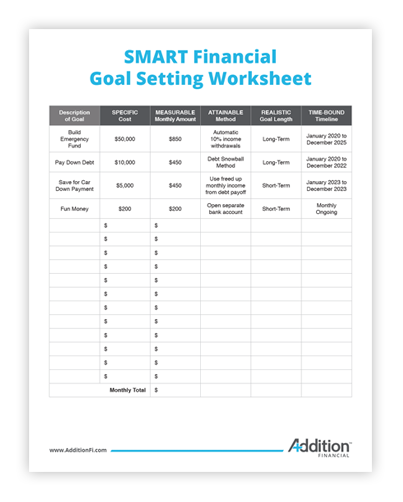The first step to effective financial goal setting is understanding how to set realistic and achievable goals. We want to note that “realistic” doesn’t mean you can’t aim high. In fact, the opposite is true. We think you should have big financial goals. The key is to negotiate the difference between “big” and “impossible.”
The most commonly-cited acronym to help people remember how to set goals is SMART: Specific, Measurable, Attainable, Realistic, and Time-Bound. The reason that SMART goals are the ones we recommend is that their specificity and built-in parameters make them achievable.
It’s important to take time to re-evaluate your goals regularly and make sure they are still SMART. You can and should adjust your goals as needed. Unforeseen circumstances can have a big impact on your financial health and outlook and it’s your job to take any changes that occur into consideration.
Setting both short and long term financial goals is an important part of your overall financial well-being. Using the downloadable worksheet will help you to set and stick to your financial goals, so that your future will be what you want it to be.

